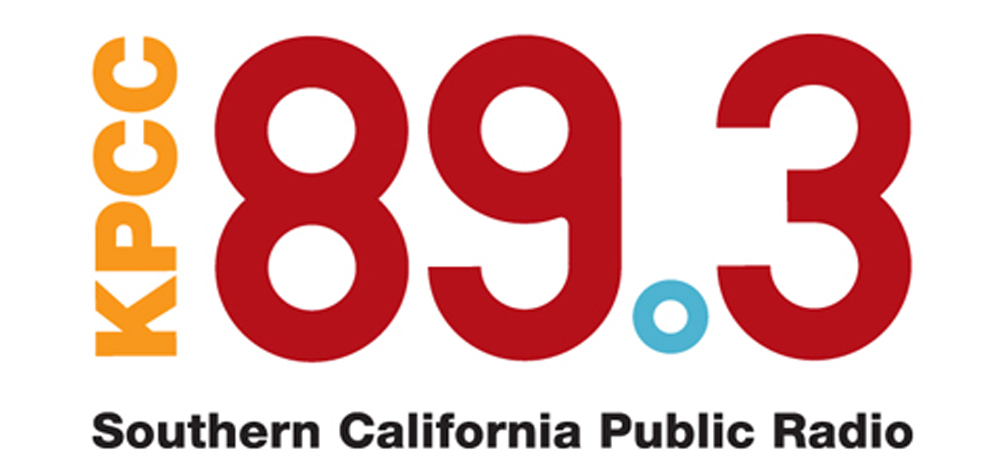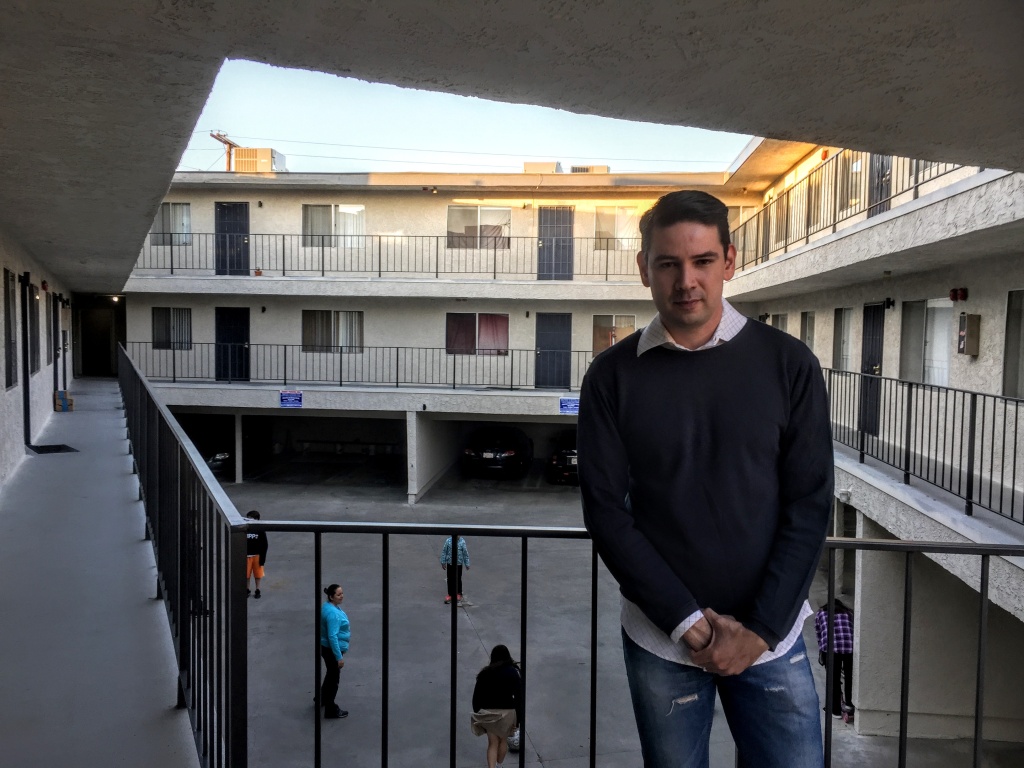Boyle Heights tenants fight double-digit rent increases in latest housing battle

In Boyle Heights, Francisco Gonzalez is working with other tenants to fight double-digit rental rate increases. JOSIE HUANG/KPCC
An Uber driver by night, Francisco Gonzalez catches up on sleep during the day. But, lately, his waking hours have been spent fighting to stay in his Boyle Heights apartment building.
On April 1, rents in the 24-unit stucco building on East 2nd Street are going up by as much as 90 percent for half the tenants, including Gonzalez. With the help of housing advocates at Union de Vecinos, the tenants have been protesting the increases to the building’s management company, Crescent Canyon Management in Culver City.
“We don’t want to leave,” said Gonzalez, who has lived in his apartment home for the last dozen years. “This is our Boyle Heights.”
Crescent Canyon Management, which represents the new owners who bought the building in December, had no comment.
The battle over 1815 East Second St. is the latest skirmish over housing affordability in this largely Latino, working-class neighborhood. Recent years has seen Boyle Heights grow in popularity as a place to live. Its proximity to the Arts District — it’s a mile away by bridge — is a draw for people priced out of other parts of Los Angeles.
“Ultimately, it’s the housing crisis,” said Mynor Godoy, president of the Boyle Heights Neighborhood Council. “It’s just become impossible to try and rent anywhere else in the city.”
In February, real estate values in Boyle Heights grew at four times the rate of the city as a whole, according to Redfin.
Neighborhood activists say that Gonzalez’ building is only the latest to get hit with double-digit rental increases. But they say the number of people affected by rapid changes in the neighborhood would be even higher if not for city regulations that restrict the size of rent increases for older housing stock — those built before 1978.
But about 11 percent of Boyle Heights’ apartment buildings are not quite old enough to fall under the rent controls, according to the office of City Council member José Huizar. That leaves potentially hundreds of residents vulnerable to the type of rent increases that Gonzalez and his neighbors are facing.
Estala Robles has been living in one of the building’s two-bedroom units with her family for the last six years, paying $1,175 a month. Her husband, a mariachi, is the family’s sole provider and gets jobs by walking the few blocks to Mariachi Plaza.
She said they cannot afford to pay the extra $700 that the landlord is seeking — a 55 percent increase. “It is terrible,” Robles said. “I can’t eat, I can’t sleep. My family can’t afford it.”
Robles said she and the other tenants plan to wait it out until April 1 when the rents go up, and see what happens. She said her family has no other option.
Should they have to move, they’ll have trouble finding another affordable place in Boyle Heights, given the neighborhood’s hot market. That’s according to a real estate agent, Juven Zapata, who said that rents for market-rate apartments in the neighborhood are rising faster than home prices.
“They’re not going to be able to afford to live here,” Zapata said. “That’s the cold, hard truth.”

